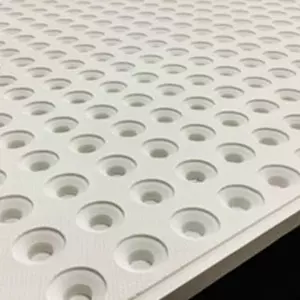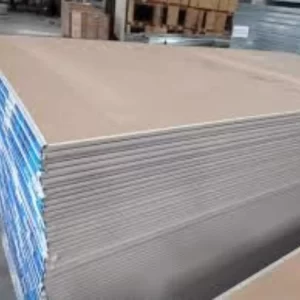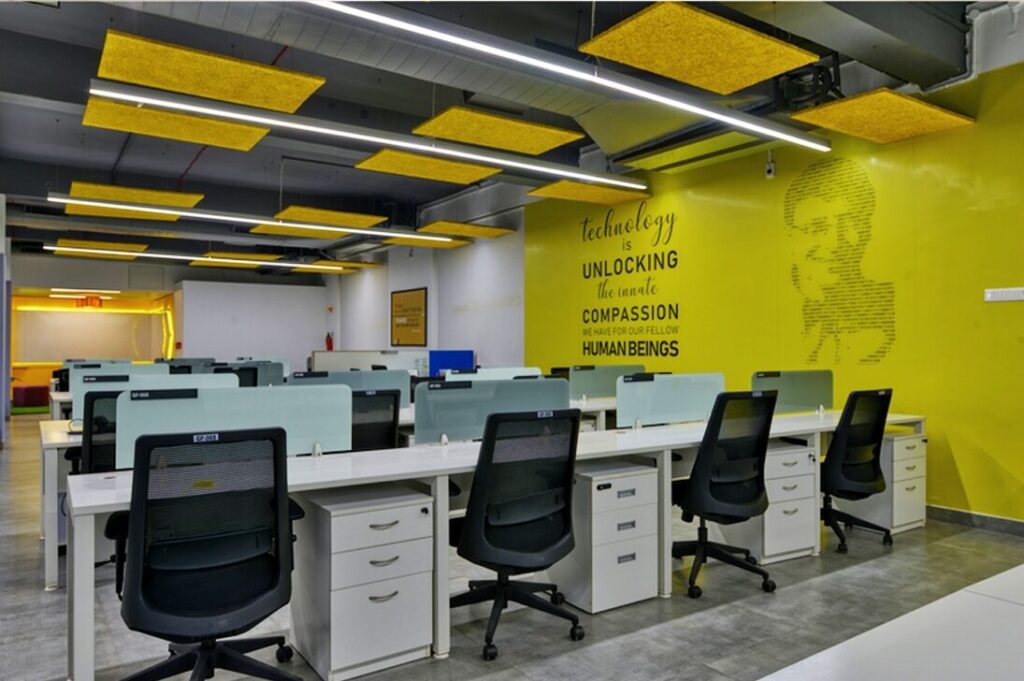Advantages of Raised Access Flooring over Traditional Flooring
Introduction
Advantages of Raised Access Flooring over Traditional Flooring Raised access flooring is a versatile solution that has revolutionized the way we design and manage interior spaces. Unlike traditional flooring, which relies on a solid foundation, raised access floors provide a platform that can be easily modified to accommodate changing needs and technological advancements.

2. Improved Accessibility and Flexibility
One of the primary advantages of raised access flooring is the improved accessibility it offers. The void created underneath the raised floor allows for the easy installation, maintenance, and reconfiguration of various services, such as electrical and data cabling, HVAC systems, and plumbing. This accessibility simplifies repairs, upgrades, and alterations, making it highly flexible for evolving business needs.
3. Enhanced Airflow and Ventilation
Raised access flooring promotes efficient airflow and ventilation within a building. The open space beneath the floor allows air to circulate more freely, reducing the reliance on air conditioning systems and improving overall indoor air quality. This enhanced airflow also helps regulate temperature and creates a comfortable working environment for occupants.
4. Efficient Cable Management
Traditional flooring often poses challenges when it comes to cable management. With raised access flooring, the void underneath provides ample space to route and organize cables, eliminating the clutter and hazards associated with exposed wires. This efficient cable management not only enhances safety but also simplifies troubleshooting and maintenance tasks.
5. Adaptability to Technological Advancements
In today’s fast-paced digital era, technological advancements are a constant. Raised access flooring is well-suited to accommodate these changes. The underfloor space allows for seamless integration of new technologies, such as power and data distribution systems, without the need for extensive modifications. This adaptability future-proofs the infrastructure and ensures it remains compatible with evolving technology trends.
6. Enhanced Aesthetics and Design Flexibility
Raised access flooring offers design flexibility, allowing architects and interior designers to create visually appealing spaces. The floor panels come in a wide range of materials, finishes, and designs, enabling customization that aligns with the overall design theme of the building. This versatility adds to the aesthetic appeal of the space while maintaining functionality.
7. Improved Sustainability and Environmental Impact
Sustainability has become a crucial aspect of modern construction practices. Raised access flooring contributes to sustainability efforts by reducing the environmental impact of buildings. The materials used in raised access flooring systems are often recyclable, and their installation minimizes waste generation. Additionally, the improved energy efficiency resulting from enhanced airflow and reduced reliance on air conditioning systems contributes to a greener environment.
8. Enhanced Comfort and Ergonomics
Comfort and ergonomics play a significant role in creating a productive working environment. Raised access flooring offers an opportunity to incorporate ergonomic features such as adjustable desks, task lighting, and comfortable seating. The underfloor space allows for the installation of air diffusers and temperature controls at the desired height, ensuring optimal comfort for occupants.
9. Cost-Effective and Easy Maintenance
Raised access flooring proves to be cost-effective in the long run. The initial investment may be slightly higher than traditional flooring, but the ease of maintenance and the reduced need for major renovations offset these costs. Routine maintenance tasks, such as cable repairs or equipment upgrades, can be carried out quickly and efficiently without disrupting the entire floor area.
10. Durability and Longevity
Raised access flooring systems are built to last. The materials used, such as steel or high-quality composite panels, offer excellent durability and resilience. These floors can withstand heavy loads, foot traffic, and the impact of everyday operations without significant wear and tear. The longevity of raised access flooring makes it a cost-effective choice in the long term.
11. Noise Reduction and Acoustic Performance
Noise pollution can be a significant issue in commercial environments. Raised access flooring systems contribute to noise reduction by absorbing and isolating sound vibrations. The combination of raised floor panels and acoustic insulation materials helps create a quieter and more productive workspace by minimizing distractions and enhancing privacy.
12. Fire Safety and Prevention
Fire safety is a crucial consideration in any building. Raised access flooring systems often incorporate fire-resistant materials, such as calcium sulfate or cementitious infills, which provide a high level of fire protection. These materials act as barriers, preventing the spread of fire and allowing occupants to safely evacuate the premises.
Conclusion – Advantages of Raised Access Flooring over Traditional Flooring
In conclusion, raised access flooring offers a multitude of advantages over traditional flooring systems. Its improved accessibility, efficient cable management, adaptability to technological advancements, and enhanced aesthetics make it a preferred choice for modern commercial and industrial spaces. Additionally, the environmental sustainability, comfort, cost-effectiveness, and durability it provides further reinforce its value as an innovative flooring solution.
Frequently Asked Question- Advantages of Raised Access Flooring over Traditional Flooring
- Are raised access floors suitable for residential applications?
Answer: Raised access floors are primarily designed for commercial and industrial applications. However, they can be used in residential settings, especially in homes with specific needs such as underfloor heating or advanced technology integration.
- Can raised access flooring support heavy equipment?
Answer: Yes, raised access flooring systems are engineered to support heavy loads, making them suitable for housing data centers, server rooms, and other equipment-intensive environments.
- How often should raised access flooring be maintained?
Answer: Routine maintenance for raised access flooring typically involves inspections for damaged panels, cable management, and cleaning. The frequency of maintenance depends on factors such as the level of foot traffic and the specific requirements of the space.
- Can raised access flooring be installed in existing buildings?
Answer: Yes, raised access flooring can be installed in existing buildings. It offers a practical solution for retrofitting spaces, allowing for the incorporation of new services and technology without extensive disruption to the existing structure.
- Are there any design limitations with raised access flooring?
Answer: Raised access flooring provides considerable design flexibility. However, it is essential to consider the weight-bearing capacity, airflow requirements, and fire safety regulations when planning the layout and selecting materials for the raised floor system.
Other Products

Grg ceiling tiles

Magnesium oxide board

Gypsum boards
Contact Us
Mobile: +919008400701 / 705
Email: sales@jayswalgroup.com

Visit Us
Address:
#6, 10th B Cross, Jayswal Center, KHB Main Road, Kaveri Nagar, Kanakanagar, RT Nagar, Bangalore – 560032, Karnataka, India.
Other Websites: